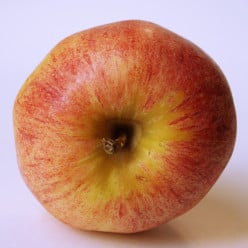How to teach division
I taught survival math to many of various ages who never understood it using props. Show nine objects, then take away objects in groups of 3. Discuss and show that 9 divided by 3 equals 3. That’s division the easy way. Take eight and divide by 3 and have a remaining amount. People learn by sight and by doing it themselves. This resolves both types of learning techniques and helps understanding simply. Then use flash cards for them memorize the numbers.
How to Teach Division
Step 1
Write on the board a fact family for addition and subtraction. For example, you could write 4+6=10, 6+4=10, 10-6=4, 10-4=6. Tell students there are also fact families for multiplication and division. Multiplication and division go together, just like addition and subtraction do. Show them a multiplication and division fact family such as 2 x3 = 6, 3 x2 =6, 6/2=3, 6/3=2. Explain to them that it is time to start learning about division.
Step 2
Start with a real-world problem such as: "I have eight kids who want to play volleyball. I need two teams of equal players. How many will be on each team? How should I 'divide' them up?" Discuss the problem with your students, then show them the equation on the board for this problem: 8/2=4. You can also draw a picture of something like twelve cupcakes and four friends, and show how the problem 12/4=3 cupcakes for each person.
Step 3
Show the fact family to go with the real-world problems and equations you discussed in Step 2. Once they understand what division means, you can show them how to figure out the answer quickly. For example, if students know that 4x3 =12, then they can see the relationship between 12/4=3 and the multiplication problem. Give students a problem such as 20/4=?, and then ask students to solve this problem to find the quotient: 4x?= 20. Explain that whatever numeral replaces the ? in the equation (in this case 5) is the answer to the division problem.
Step 4
Discuss how some division problems will not always have a whole number for the answer. For example, give your students a realistic problem such as, "I have 22 cookies and 5 cookies can fit in each box. How many full boxes will I have, and how many left over cookies?" Then show the equation 22/5=?. Work on the problem together with illustrations or even manipulatives until students figure out the answer 4 boxes with 2 cookies left over or 4 R 2. Again, make sure students understand what the R stands for (remainder) and what remainder means. It is important for students to make connections with multiplication and real-life applications when learning division.If you talk about primary education than the four most basic
operation of mathematics are addition, subtraction, multiplication and
division. All four of these most basic mathematic operations belong to the
arithmetic branch of mathematics. Like any... read more- WildIrisposted 15 years ago
0
When teaching division I think it important that the learner understand the relationship between addition and subtraction is a similar to relationship between multiplication and division. Subtraction is the inverse of addition the same as multiplication is the inverse of division. This type of explanation will probably fall flat if a demonstration of these four operation is not provided. The demonstration would benefit from not just a numeric explanation but the use of physical objects as well.
Once the concept is modeled, practicing division and the multiplication fact families associated with the numbers will help the learner gain confidence in performing both division and multiplication facts. One would move from the simple to the complex, being careful not to overwhelm the learner with too much information all at once. Using and reviewing the concepts in everyday situations, evaluating when and in what types of situations addition, subtraction, multiplication or division will be used should add to understanding.
When working with word problems special attention should be paid to the wording of the problem and assessing what is being asked and what operation should be used to answer the problem. Teaching Multiplication and Division together as Fact Families makes both concepts easier understand and memorize. read more
The first thing is to correct those who have replied and, quite worryingly, have adopted the americanisation of the word mathematics as 'math'
Mathematics has an 's' on the end and it is shortened to Maths.
In order to teach division, you have to do 2 things.
1. reinforce the multip;lication facts, as a child (or adult) who is unable to recall that 7 x 4 is 28, will struggle to solve 'what is 28 divided by 7?'
2. A metod, or algorithm has to be taught, such as chunking. This where we again use multiplication facts. So, to divide 216 by 8, we teach that 10 x 8 = 80 and we still need anpother 136, so we chunk again. 10 x 8 is 80 again, leaving 56.
An able pupil will know that 7 x 8 = 56 and so the answer is 10 + 10 +7 = 27.
Alternatively, you use one of the traditional long or short division techniques.
However, the child needs to understand the Maths that is happpening and that we are 'sharing' 216 by 8 or finding how many times 8 will go into 216.
Use of inverse is also good. i.e. if 7 x 8 = 56 then 56 divided by 7 is 8 and 56 divided by 8 is 7.
Division is a difficult technique and also needs support in discussing 'what is happening' and relating to real life.The main concept to get past the hurdle is to recognize that addition, subtraction, multiplication, and division are NOT four separate disciplines. It's really just two: multiplication is just repeated addition, and division is just repeated subtraction. (and subtraction is the opposite of addition, so they're really just one whole discipline)
By recognizing that division is really just subtraction done repeatedly, i.e. 9 / 3 = 3 because you can subtract 3 from 9 three times, the child will be able to actually understand the concept better. THEN the techniques like using multiplication tables in reverse, or chunking, and others, will make far more sense to the child.It is simple. But first, there is a prerequisite. One has to know the multiplication table, from 1x1 to 9x9, at least. To 12x12 or so is nice. That requires -- HORRORS! -- rote drilling and memorization. If the student does not know the table backwards, forwards, at random, and is not able to give an instant answer for any pair of digits, he is not ready to try to learn division. Have him get back to me when ready. No sense talking about division until multiplication (and addition and subtraction) is known.
You don't need all the modern "educational" methods. The old methods worked fine. Those boring drills produced kids who were numerate. The modern crap just caters to spoiled brats who just "wanna have fun", but don't learn or want to learn anything. You don't need a "reason" to have them learn the tables. The fact that you tell them to should be sufficient.
Related Discussions
- 1
Addition, subtraction, division and mortification are the basic rule of Math, Is
by H P Roychoudhury 15 years ago
Addition, subtraction, division and mortification are the basic rule of Math, Is Excel different...from that?
- 19
6 - 1 x 0 + 2 / 2 =
by G. Diane Nelson Trotter 12 years ago
6 - 1 x 0 + 2 / 2 =What is the process necessary to solve
- 4
basic arithmetic operations in c
by dz9dona 15 years ago
basic arithmetic operations in c
- 10
Can maths really be taught?
by Deng Xiang 13 years ago
Can maths really be taught?How can we empower students with keen observation skills and a meticulous attitude towards Math to prevent unnecessary mathematical errors, and equip students with problem solving skills in order to tackle challenging questions? The maths questions are never ever going to...
- 4
How to bring interest to learn mathematics for students
by Babu ramesh 14 years ago
How to bring interest to learn mathematics for students
- 35
Should teachers be held more accountable for student success?
by Paul Swendson 11 years ago
And if so, how?














